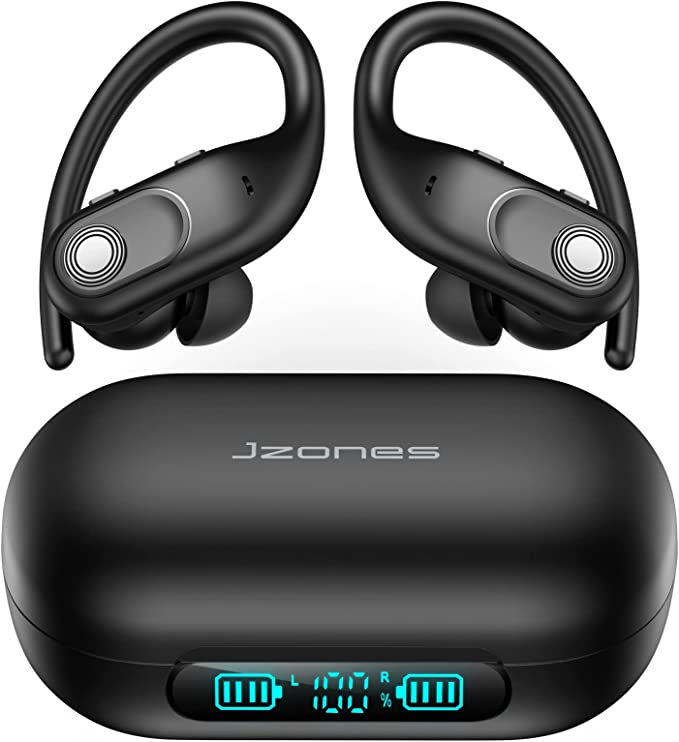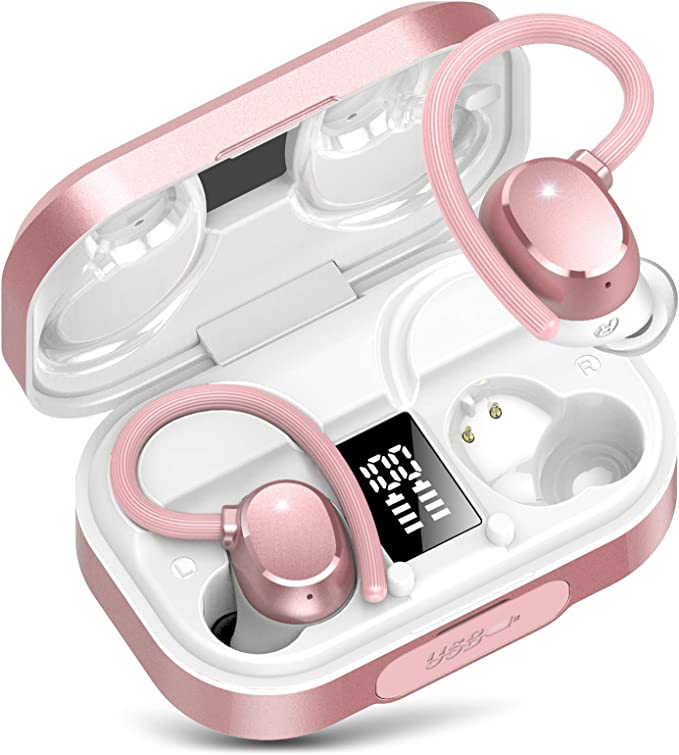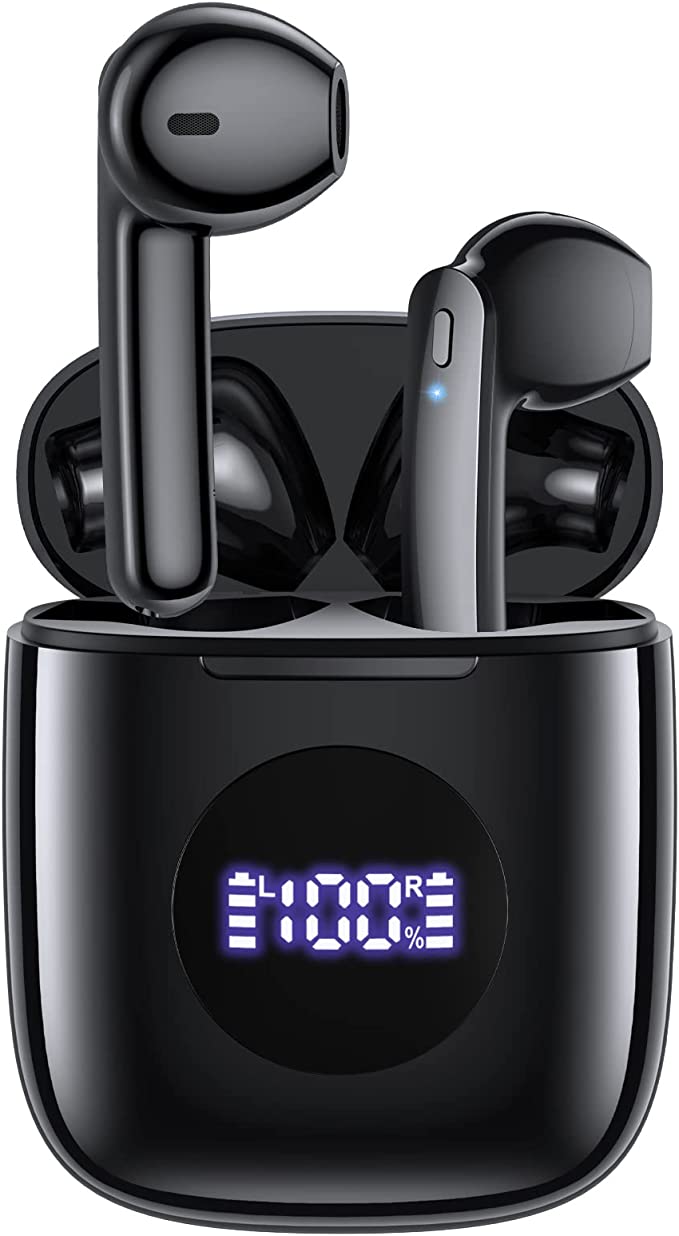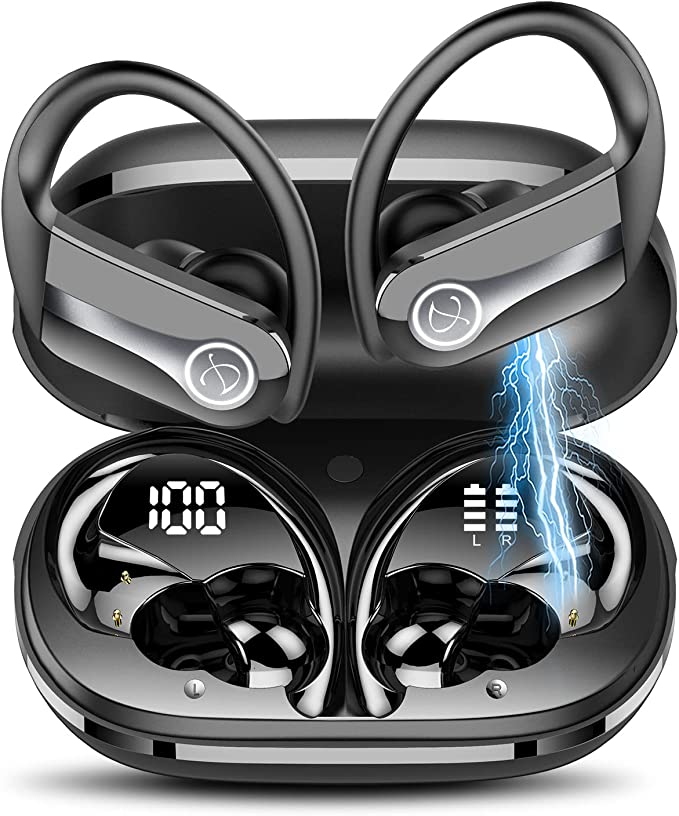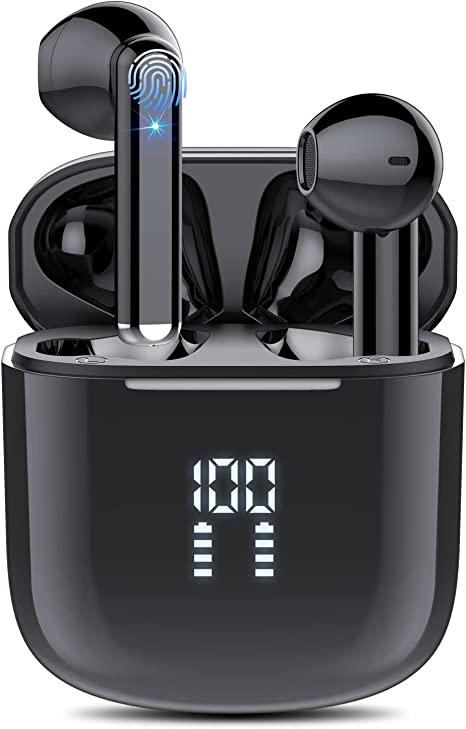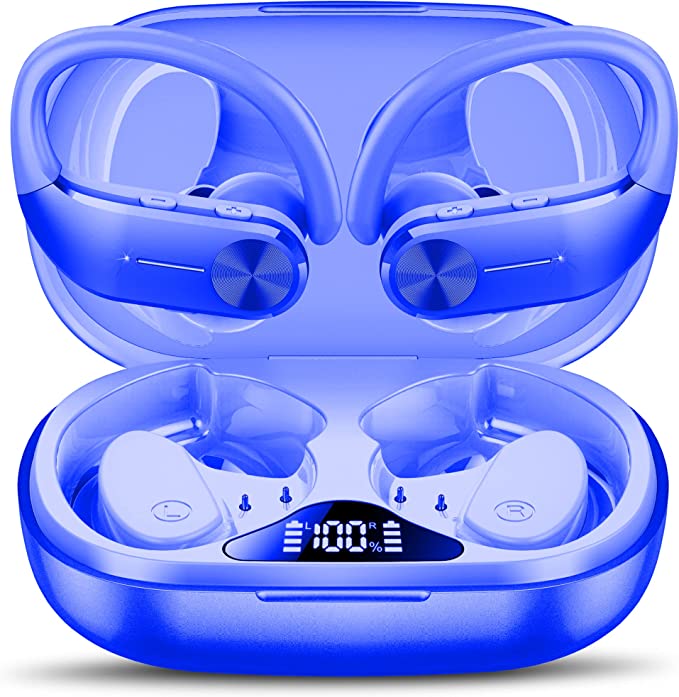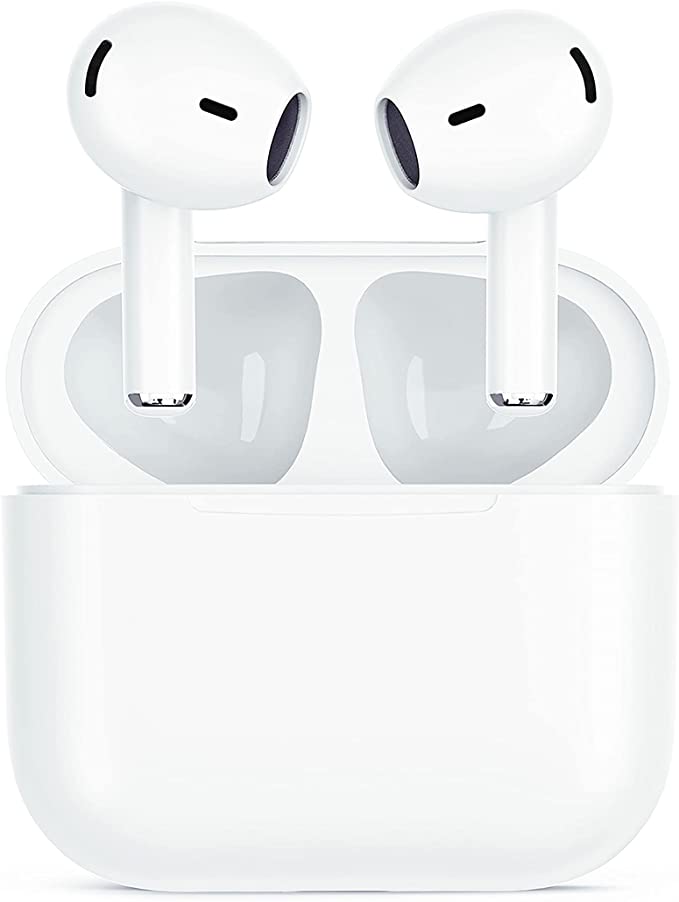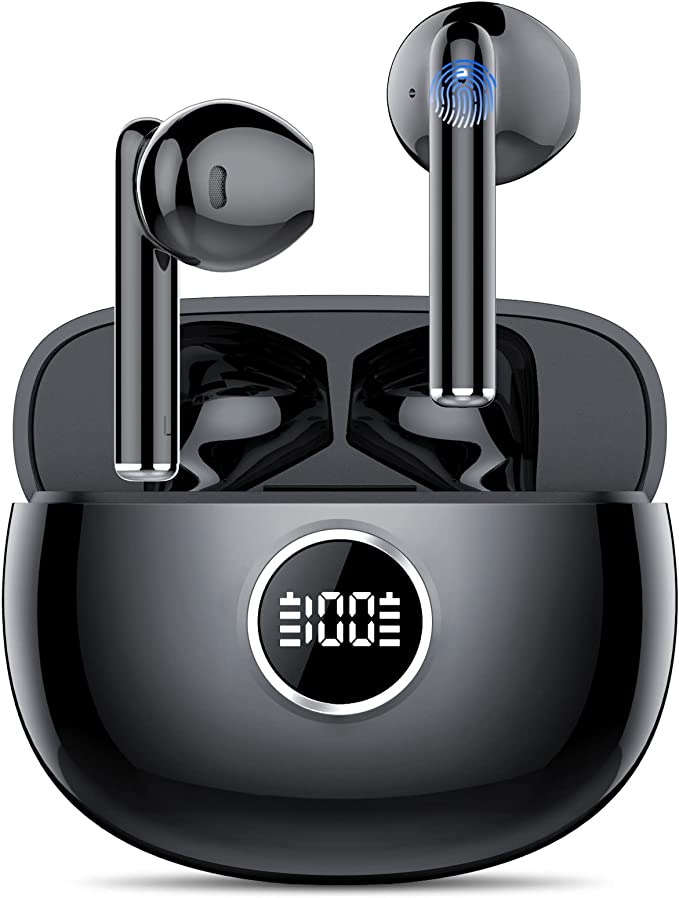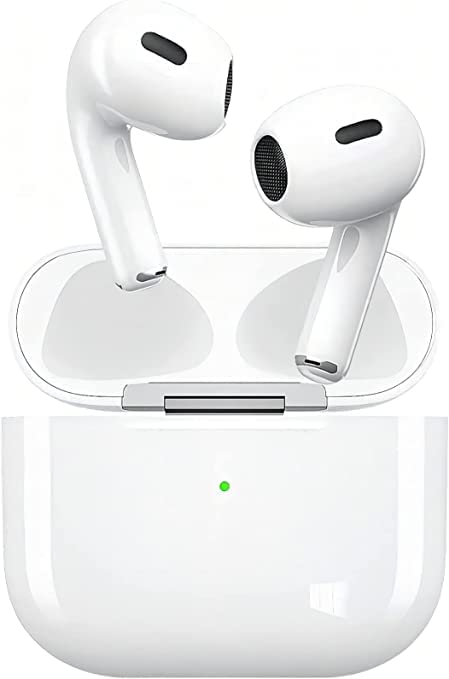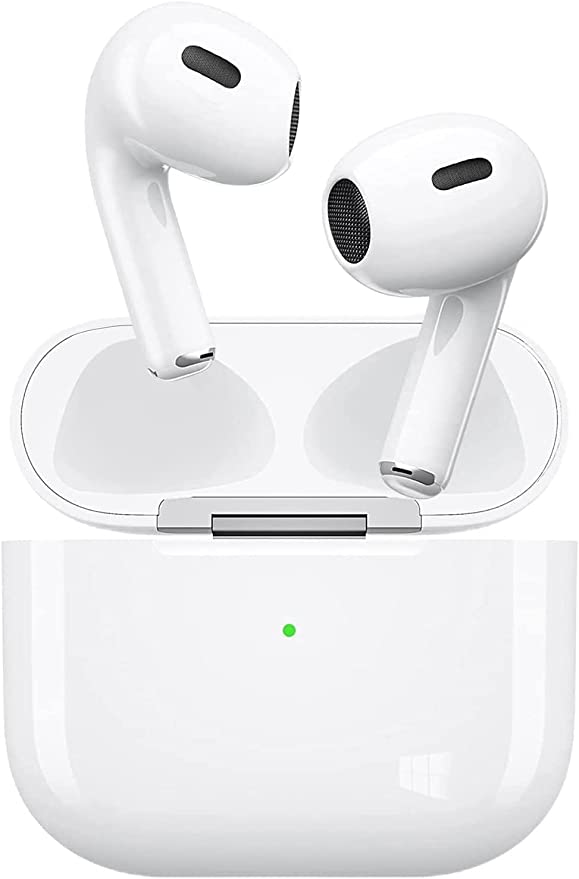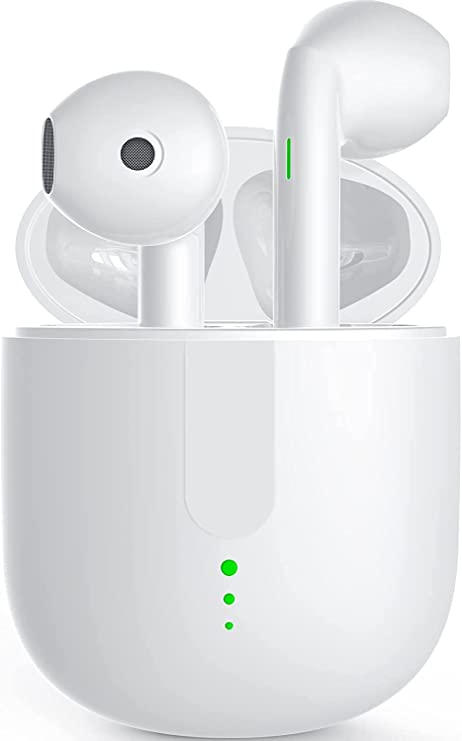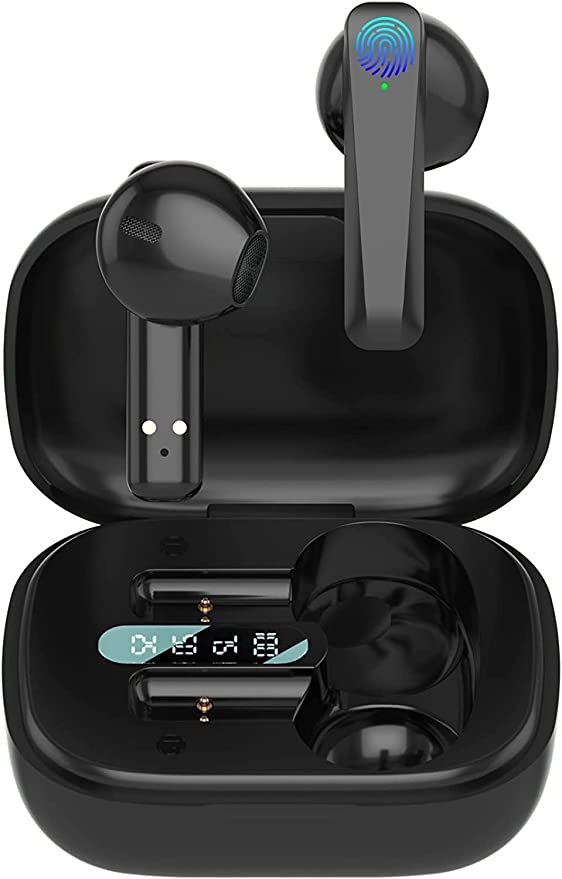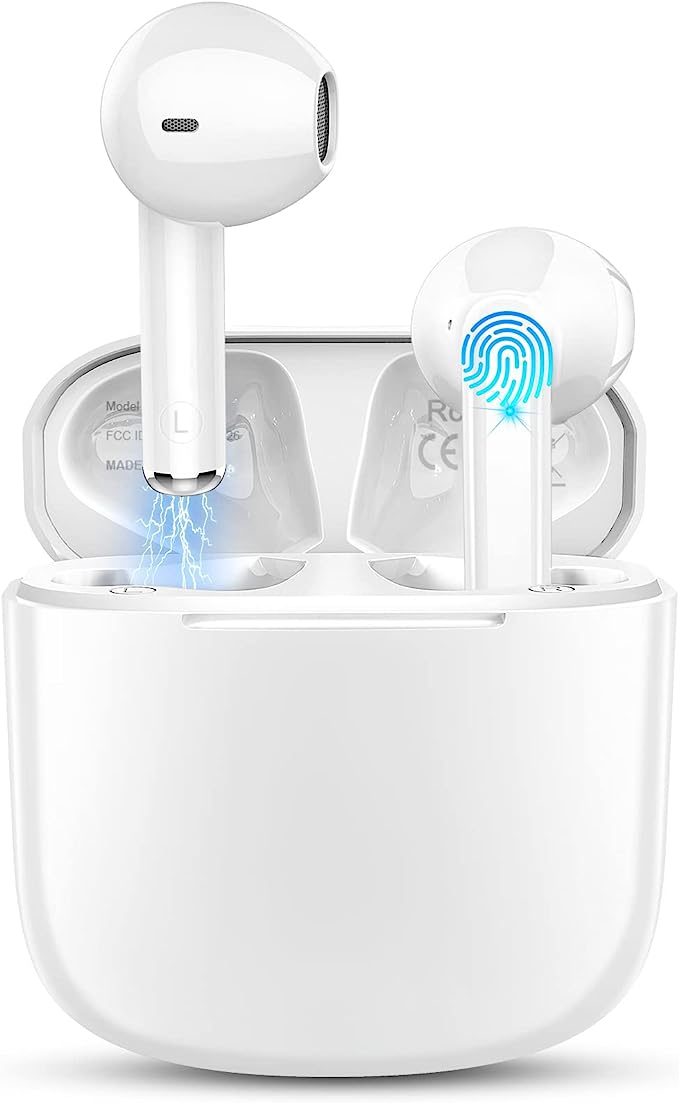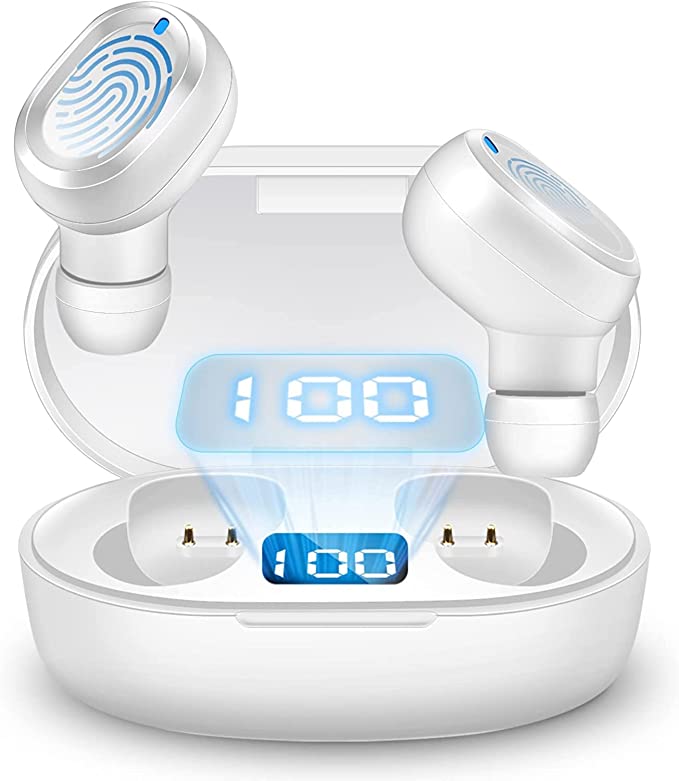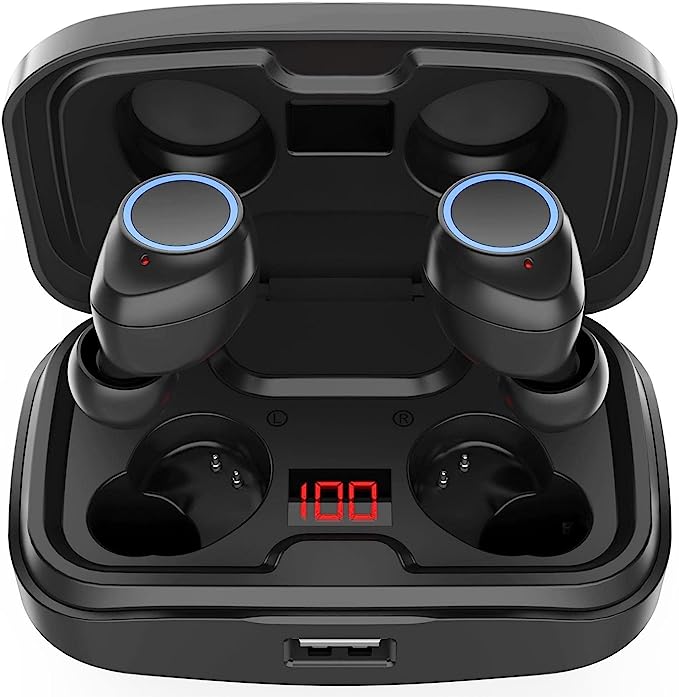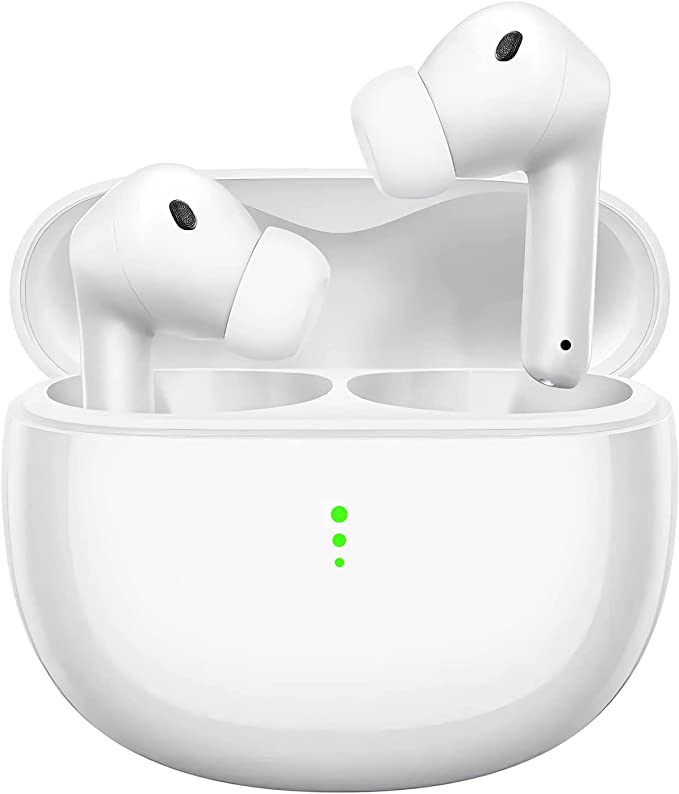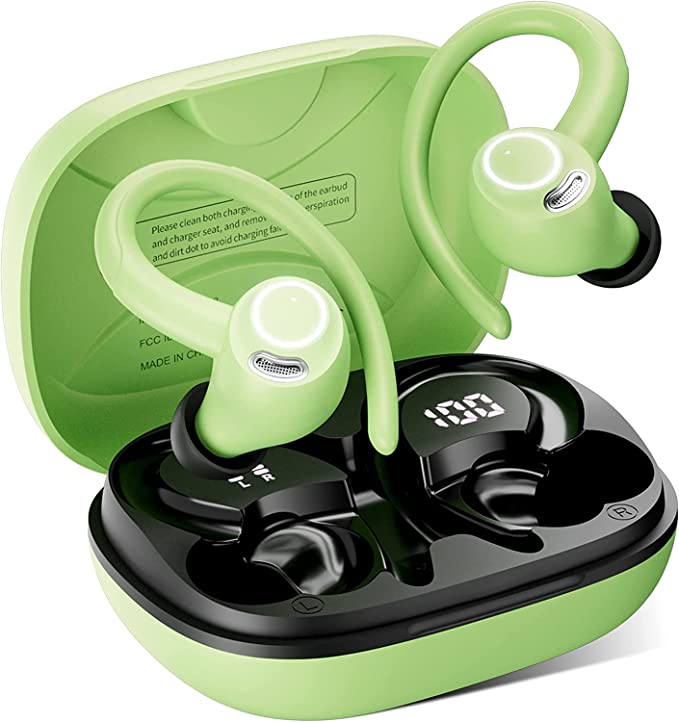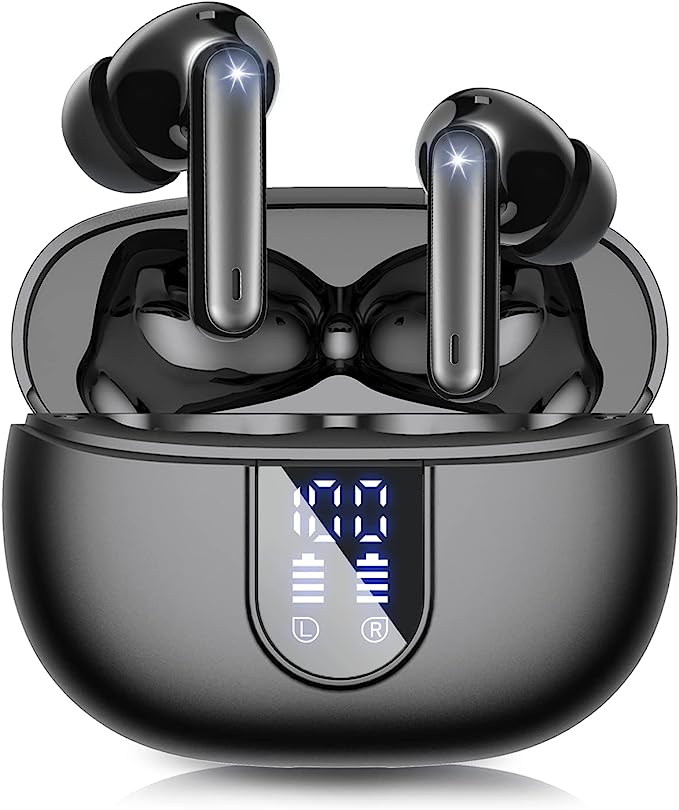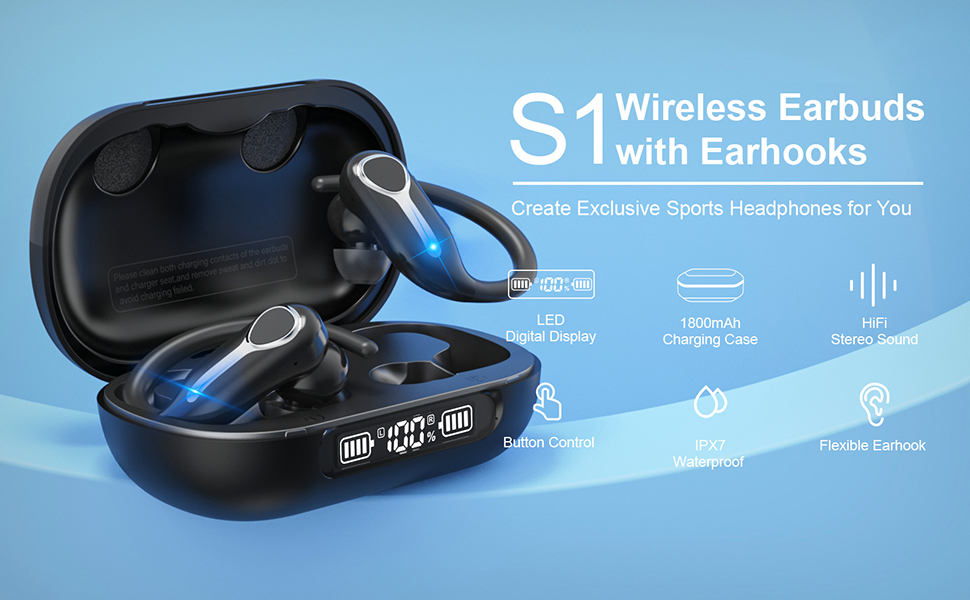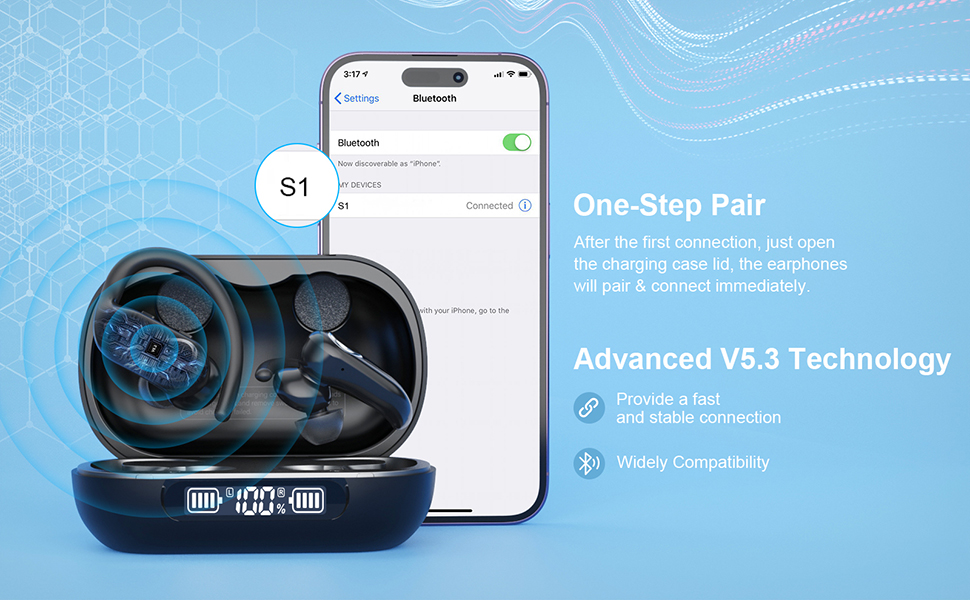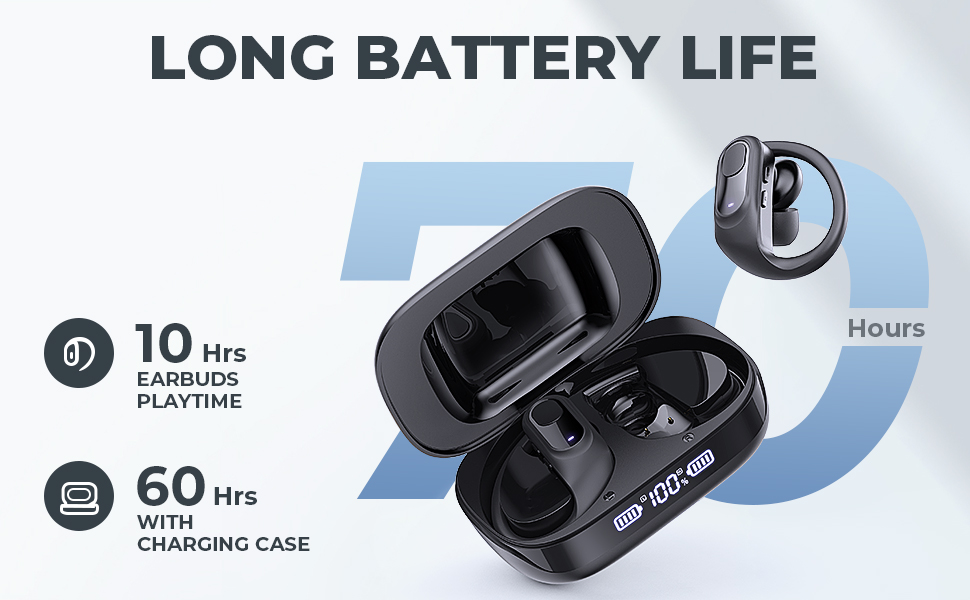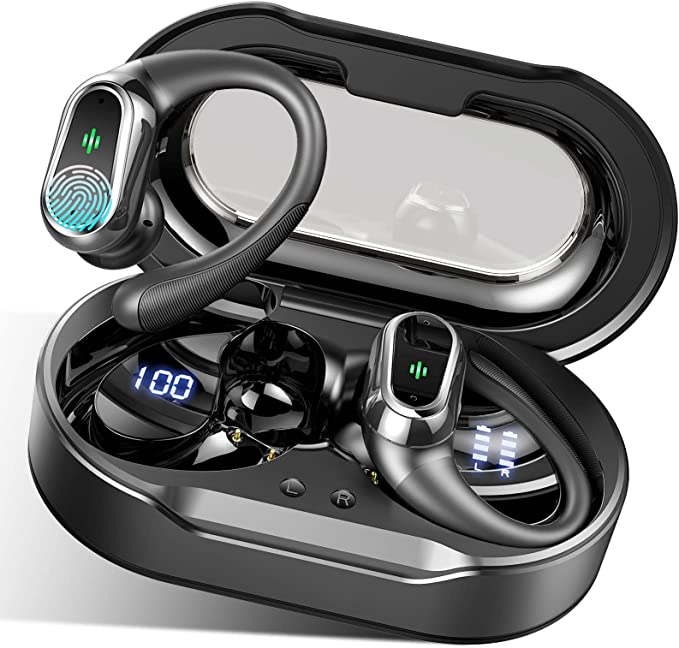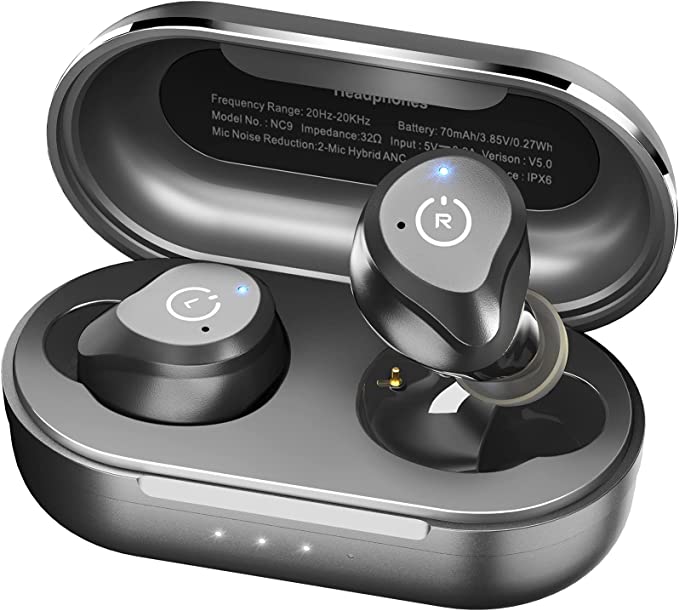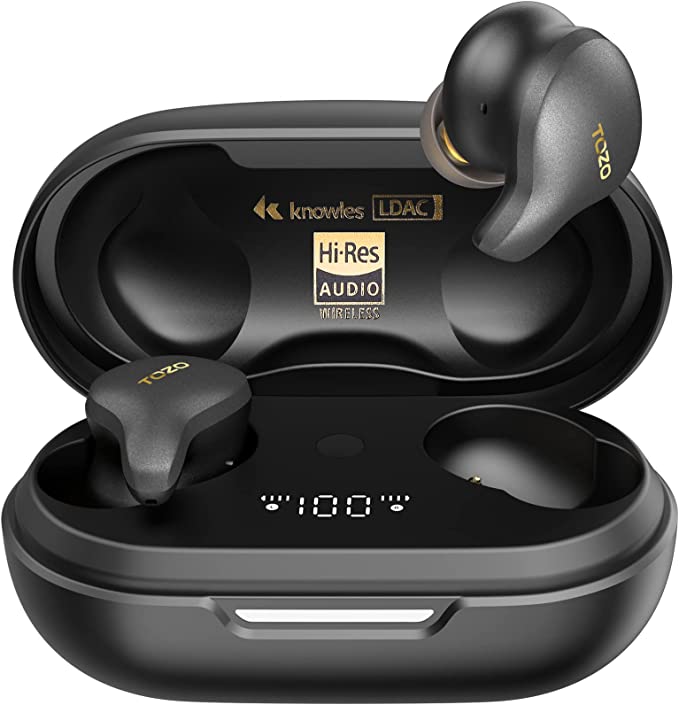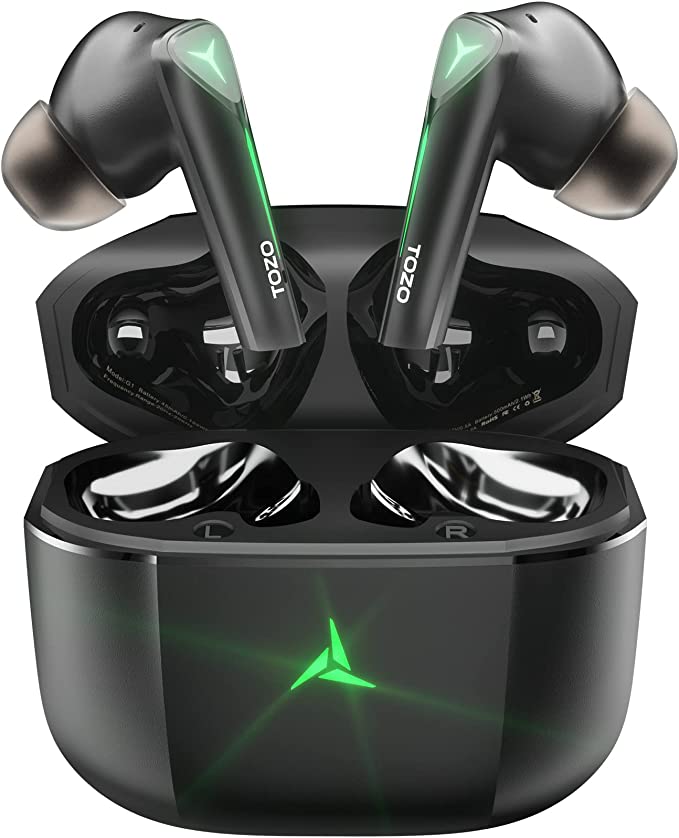CAPOXO H06 Wireless Earbuds: Bluetooth 5.3 for Ultimate Freedom and Sound
Update on March 21, 2025, 8:53 a.m.
We live in an increasingly wireless world, and nowhere is this more evident than in how we listen to music, podcasts, and audiobooks. Earbuds have become ubiquitous, tiny companions that deliver sound directly to our ears, untethered from our devices. But have you ever stopped to wonder what technology makes these miniature marvels possible? Let’s delve into the inner workings of a popular example, the CAPOXO H06 wireless earbuds, and explore the science that powers their cord-free convenience.

Untangling the Wires (and the Early Challenges)
For years, listening to music on the go meant dealing with tangled headphone wires – a frustrating ritual familiar to anyone who’s ever stuffed a pair of earbuds into a pocket. The first wireless earbuds, while liberating, often faced their own set of problems: dropped connections, short battery life, and bulky designs. Thankfully, wireless technology has come a long way.
Bluetooth: The Invisible Link
The key to wireless earbuds is Bluetooth, a technology that allows devices to communicate wirelessly over short distances. Think of it as an invisible handshake between your phone and your earbuds, exchanging digital information that gets translated into the sound you hear. It’s a bit like a walkie-talkie, but instead of pressing a button to talk, the connection is continuous and automatic.
A Short History of Bluetooth: From Awkward to Awesome
Bluetooth hasn’t always been the sleek, reliable technology we know today. Early versions, like Bluetooth 1.0 and 2.0, were plagued by connectivity issues, high power consumption, and limited range. Imagine constantly having to re-pair your devices or your music cutting out every few minutes – not exactly a recipe for relaxed listening.
Each new generation of Bluetooth brought improvements. Bluetooth 3.0 focused on faster data transfer, while 4.0 introduced Bluetooth Low Energy (BLE), a significant step towards extending battery life. Bluetooth 5.0 further refined these advancements, offering even greater range and stability.
Bluetooth 5.3: The Current Standard of Wireless Audio
The CAPOXO H06 earbuds utilize Bluetooth 5.3, the latest iteration of this technology. This means they benefit from all the cumulative improvements of previous versions, plus some new enhancements. Here’s what makes 5.3 stand out:
- Lower Energy Consumption: Bluetooth 5.3 includes features like LE Audio, which is designed to significantly reduce power consumption without sacrificing audio quality. This translates directly to longer battery life for your earbuds. Think of it as a more efficient engine in a car – it uses less fuel to travel the same distance.
- Enhanced Connection Stability: Bluetooth 5.3 employs clever techniques to maintain a strong and stable connection, even in environments with a lot of wireless interference (like a crowded coffee shop or a busy gym). It’s like having a more robust antenna that can pick up a signal even in challenging conditions.
- Increased Range: While the exact range depends on various factors (like obstacles and the power of your phone’s Bluetooth transmitter), Bluetooth 5.3 generally offers a wider range than previous versions. This means you can move further away from your device without losing the connection.
- Reduced Latency: Latency refers to the delay between when a sound is produced by your device and when you hear it in your earbuds. Bluetooth 5.3 minimizes this delay, which is crucial for watching videos or playing games where audio sync is essential. Imagine watching a movie where the actors’ lips are out of sync with the sound – that’s the problem high latency can cause.
Inside the Earbud: How Sound is Created
The heart of any earbud is the driver, the tiny component that converts electrical signals into sound waves. The CAPOXO H06 uses a 13mm dynamic driver. To understand how it works, imagine a miniature loudspeaker.
A dynamic driver consists of three main parts:
- Diaphragm: A thin, flexible membrane that vibrates to create sound waves.
- Voice Coil: A coil of wire attached to the diaphragm.
- Magnet: A permanent magnet that creates a magnetic field.
When an electrical signal (representing the audio) passes through the voice coil, it creates a fluctuating magnetic field. This field interacts with the permanent magnet’s field, causing the voice coil – and the attached diaphragm – to vibrate. These vibrations push and pull the air, creating sound waves that travel to your ear.
The size of the driver, 13mm in this case, generally correlates with its ability to move more air, which often results in a richer, more powerful bass response. However, it’s important to note that driver size isn’t the only factor determining sound quality. The material of the diaphragm, the strength of the magnet, and the overall design of the earbud all play a role.
The frequency response of a headphone, usually expressed in Hertz (Hz), indicates the range of frequencies it can reproduce. A wider frequency response suggests that the headphone can potentially reproduce both very low bass tones and very high treble tones. While the exact frequency response of the CAPOXO H06 isn’t provided in the available information, a typical range for quality earbuds is 20Hz to 20,000Hz, encompassing the full range of human hearing.
IPX7 Waterproofing: Understanding the Limits
The “IPX7” rating on the CAPOXO H06 indicates its level of water resistance. The “IP” stands for “Ingress Protection,” and the “X” means it hasn’t been tested for dust protection. The “7” is the crucial part: it signifies that the earbuds can withstand immersion in up to 1 meter of water for up to 30 minutes under test conditions.
It’s vital to understand that this is a test condition, performed in a controlled laboratory environment. It doesn’t guarantee that the earbuds will function flawlessly after every accidental dunk in the pool or prolonged exposure to heavy rain. Real-world use can introduce variables like water pressure (from a showerhead, for example), the presence of soap or other chemicals, and the age and condition of the earbuds’ seals. While IPX7 provides excellent protection against sweat and rain, it’s best to think of it as a safety net, not an invitation to deliberately submerge your earbuds for extended periods.
Powering Your Audio: Battery Life and Charging
One of the most significant advantages of modern wireless earbuds is their extended battery life. The CAPOXO H06 is advertised as offering up to 40 hours of total playtime, with 5 hours from the earbuds themselves and an additional 35 hours provided by the charging case. This impressive figure is a direct result of the power efficiency of Bluetooth 5.3 and the capacity of the batteries within the earbuds and the case.
While the exact battery capacity (measured in milliampere-hours, or mAh) isn’t specified in the provided information, we can understand the basic principle: a larger mAh rating generally means a longer playtime. The charging case acts as a portable power bank for the earbuds, allowing you to recharge them multiple times on the go.
The CAPOXO H06 offers two convenient charging options:
- Wireless Charging: The case is compatible with Qi-standard wireless chargers (sold separately). This allows you to simply place the case on a charging pad to replenish its battery, eliminating the need for cables. Wireless charging works through electromagnetic induction – a magnetic field transfers energy from the charging pad to the case.
- USB-C Charging: The case also features a USB-C port for wired charging. USB-C is a versatile and increasingly common connector that offers faster charging speeds than older USB standards.
The LED display on the charging case is a user-friendly feature that provides a clear indication of the remaining battery life. The digital display shows the percentage of charge remaining in the case, while separate LED bars indicate the charging status of each earbud. This eliminates the guesswork and helps you avoid unexpected power outages.
Finding the Right Fit: Comfort and the Semi-in-Ear Design
The CAPOXO H06 utilizes a “semi-in-ear” design. This means the earbuds rest in the outer part of your ear canal, rather than being inserted deeply like traditional in-ear monitors (IEMs). This design choice has both advantages and disadvantages:
- Comfort: Many users find semi-in-ear designs more comfortable for extended wear, as they don’t create the same pressure or plugged-up feeling as some in-ear models. This is particularly beneficial for people who are sensitive to in-ear pressure.
- Noise Isolation: Because semi-in-ear earbuds don’t form a tight seal in the ear canal, they provide less passive noise isolation than in-ear designs. This means you’ll be more aware of your surroundings, which can be desirable in some situations (like walking or cycling outdoors) but less ideal in noisy environments (like a crowded bus or airplane).
- Sound Leakage: Conversely, semi-in-ear designs can also be more prone to sound leakage, meaning that people nearby might be able to hear your audio at higher volumes.
The best earbud design depends on individual preferences and usage scenarios. If you prioritize maximum noise isolation for focused listening, a fully in-ear design might be a better choice. However, if comfort and awareness of your surroundings are more important, a semi-in-ear design like the one used in the CAPOXO H06 could be a good fit. It’s also important to consider the shape of your ears, as some designs may fit certain ear shapes better than others.
Beyond the Basics: Touch Controls and Microphone
The CAPOXO H06 features touch controls on each earbud, allowing you to manage music playback (play/pause, skip tracks, adjust volume), answer and end calls, and activate your voice assistant without having to reach for your phone. This hands-free convenience is a standard feature on many modern wireless earbuds.
The CAPOXO H06 also allow both Mono and Binaural modes.
While the provided information doesn’t specify the number or type of microphones used in the H06, the presence of microphones is essential for phone calls and voice assistant functionality. The quality of the microphones and any noise-canceling technology they employ will significantly impact call clarity.
The Future of Wireless Audio
The technology behind wireless earbuds is constantly evolving. We can expect to see even lower power consumption, leading to even longer battery life. There’s also ongoing research into delivering lossless audio quality over Bluetooth, which would rival the fidelity of wired headphones. Smarter noise-canceling and transparency modes, powered by artificial intelligence, are also likely to become more prevalent.
Making Informed Choices
The CAPOXO H06 wireless earbuds, with their Bluetooth 5.3 connectivity, long battery life, and IPX7 water resistance, represent a solid option in the ever-expanding world of wireless audio. However, the best earbuds for you will ultimately depend on your individual needs and preferences. Consider your priorities – comfort, sound quality, noise isolation, battery life, and budget – and choose the earbuds that best fit your lifestyle. By understanding the underlying technology, you can make a more informed decision and enjoy a truly immersive and convenient listening experience.
